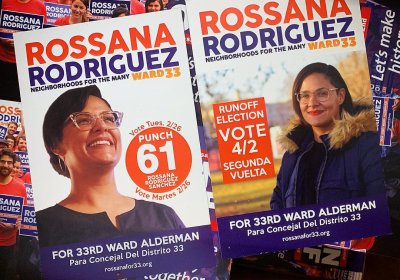Barely had we digested the news of the unexpected Coalition victory when the corporate media commentators and a number of senior party leaders were blaming Labor’s election loss for it being too left-wing — “too ambitious”, “a large target” and “bit off more than it could chew”.
Bernie Sanders
Green Left Weekly’s Susan Price spoke to Democratic Socialists of America (DSA) activist Isaac Silver following the announcement by United States Senator, Bernie Sanders that he will contest the 2020 US Presidential race.
Nine hours after Vermont Senator Bernie Sanders confirmed on February 20 he would challenge Donald Trump for the US Presidency the campaign had raised US$6 million from 225,000 contributors.
Populism Now! The Case for Progressive Populism
David McKnight
New South, 2018
177 pages, rrp $29.99
David McKnight’s Populism Now! catches a wave of discussion about the chances for a progressive “populism”, writes Jonathan Strauss.
Also in the spray, for example, is a June Quarterly Essay piece by the Australia Institute’s Richard Denniss “Dead Right: how neoliberalism ate itself and what comes next” and the previously post-whatever Chantal Mouffe’s musings on “left populism”.
Bhaskar Sunkara is editor of the US-based socialist magazine Jacobin and a member of the Democratic Socialists of America, which has experienced rapid growth over the past year. Green Left Weekly’s Alex Bainbridge spoke to him about US politics under President Donald Trump and prospects for socialists.
In his September 2 article “Responding on Sanders and reforming the Democrats”, Barry Sheppard fundamentally mischaracterises the position I outlined in “Socialists and Bernie Sanders”. I specifically did not argue in favour of the far left in the US trying to “reform” the Democratic Party.
In his response to my August 1 (GLW #1148) piece on the strategy of US Senator Bernie Sanders, Danny Fairfax writes in GLW #1150 on why he thinks the Democratic Party can be reformed.
One error the comrade makes is his view of the primary system in the United States. He thinks it gives roughly the same chances for “grassroots movements to defeat entrenched [Democratic] party elites” as the structure of the Labour Party in Britain allowed Jeremy Corbyn’s rise to the leadership. It doesn’t.
Leafing through my August 1 copy of Green Left Weekly, I thought I spotted an egregious typo. Surely, Barry Sheppard’s dispatch from San Francisco, “Bernie Sanders’ Democratic Party strategy fatally flawed” in issue 1148 had had an apostrophe inserted in the headline where there should have been a colon.
Coalition finance minister Mathias Cormann told an admiring audience at the conservative Sydney Institute on August 23 that Labor leader Bill Shorten was “channelling” Jeremy Corbyn and Bernie Sanders.
If only...
The Democratic Socialists of America (DSA) held their national conference in Chicago on August 5 and 6, at a gathering that confirmed its emergence as stronger, younger and more radical group than it has ever been.
Before last year’s US presidential election, the DSA boasted between 7000-8000 members. Since then, it has ballooned to 25,000 members — mostly young and hungry for a fight.
In a New York Times op-ed in June titled “How Democrats Can Stop Losing”, Bernie Sanders slammed the Democratic Party.
“In 2016 the Democratic Party lost the presidency to possibly the least popular candidate in American history,” he wrote. “In recent years, Democrats have also lost the Senate and House to right-wing Republicans whose extremist agenda is far removed from where most Americans are politically.
“Socialism is back. Unmentioned and unused, a dead concept and suddenly there was Corbynism.” That’s how Guy Rundle announced the resurrection in “The Death of Neoliberalism” in the July 15 issue of The Saturday Paper.
- Previous page
- Page 2
- Next page











